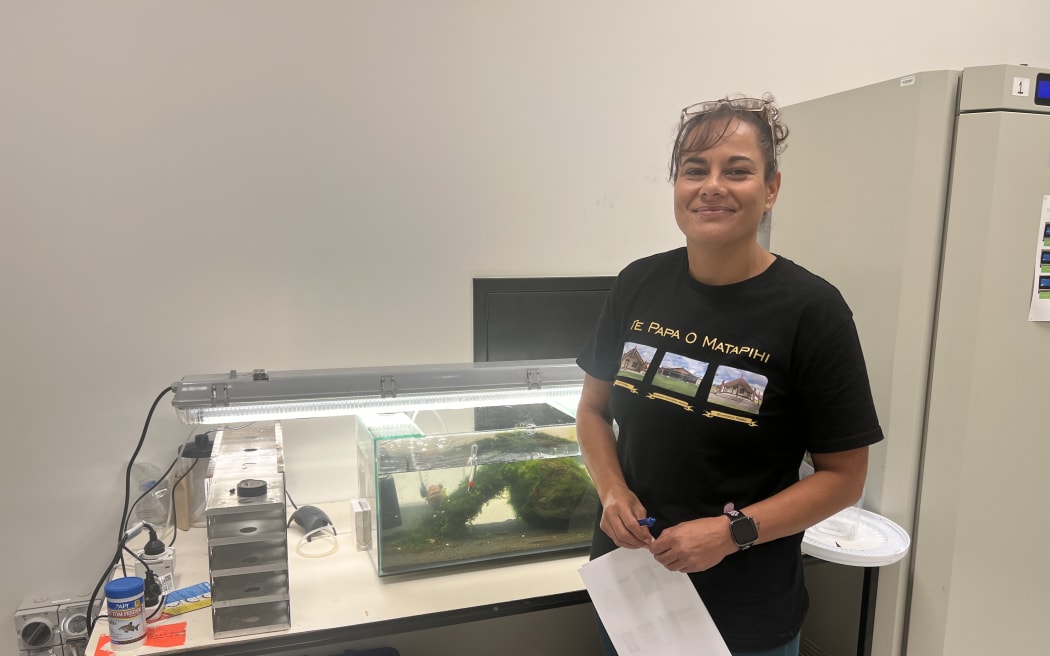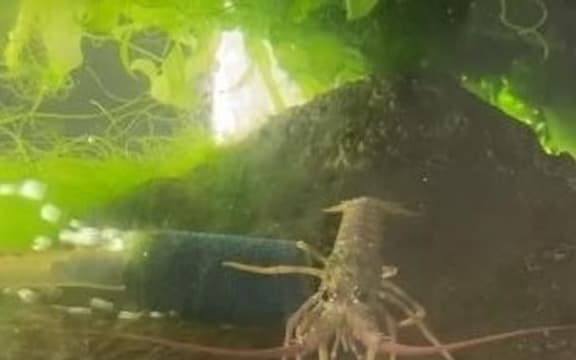Inside the lab space at the Coastal Marine Field station Kiamaia Ellis checks in on the pēpi kōura, one is not much more than two centimetres in length.

Photo: Justine Murray
Follow Our Changing World on Apple Podcasts, Spotify, Stitcher, iHeartRADIO, Google Podcasts, RadioPublic or wherever you listen to your podcasts.
In another tank one is darker in shell colour and the other is more translucent, Kiamaia says it’s because of how much light the kōura expose themselves to while in their tanks. One pēpi is shy, and only comes out when it’s feeding time. The observation notes refer to it as the ‘pipe cray’.

The resilience of pepi koura is part of Kiamaia's research objectives. Photo: Justine Murray
“I’m actually quite attached to the pēpi kōura…they’re such characters there’s one there that comes out and dances around and plays and we have a little kōrero” Kiamaia says.
Kiamaia’s Phd research project ‘Pēpi Kōura: A transdisciplinary mātauranga Māori and science approach to enhancement and resilience of puerulus kōura in a changing climate” stems from the aspirations of local tangata whenua who according to Ellis have ‘observed the degradation of tāonga species over many generations’. Local iwi put this down to urban, industrial and harvesting pressures.
To enhance these marine species Ellis will on-grow pēpi kōura and assess how they adapt to different diets and how their shell develops using different pH levels. She will also monitor the mauri (vitality, life essence) of the pēpi while in their habitat.


